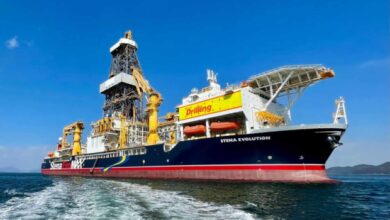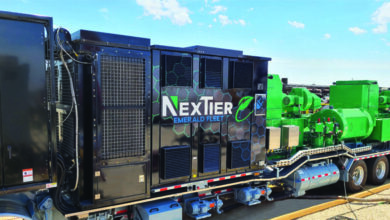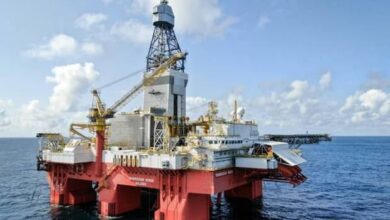Intelligent wells: It’s not all or nothing
Fit-for-purpose levels of complexity making IW technology viable for more than just high-cost deepwater wells
By Katie Mazerov, contributing editor

In the increasingly deep and deviated world of oil and gas recovery, state-of-the-art completions technology has pushed the industry into arenas once deemed unreachable. Among the cutting-edge advances is intelligent well (IW) technology, such as downhole pressure and temperature gauges and meters for retrieving data, and remote flow control valves that can manipulate the flow of hydrocarbons and manage water.
These systems are allowing operators to enhance production from ultra-deep waters to tight-gas shale plays to extended-reach multizone and multilateral wells.
As the challenges of hydrocarbon recovery have increased, IW technology has also evolved significantly over the past 10 years for applications beyond the high-stakes deepwater wells where it traditionally has been deployed. And it’s not necessarily an all-or-nothing proposition. Today, companies can choose to install an IW system that allows them to remotely control wells, or they can choose a system of sensors that measures and monitors temperature, distributed temperature and pressure. Or, they can combine the two to create a very high-end system of well intelligence.
“An intelligent completion design begins by looking at the reservoir,” said Mike Konopczynski, director of technology, WellDynamics, a division of Halliburton. “As with most completions, intelligent completions are custom-designed to get the most out of a reservoir with any other constraints applied.”
Constraints can include interfacing with existing well construction equipment, wellbore architecture and government regulatory requirements. “Ultimately, each application requires a thorough understanding of the reservoir management objectives and the intelligent well functionality required to realize these objectives to ensure adequate control, without paying for more capability than is needed,” he said.
As is often the case with technology, economic drivers are the primary reasons operators consider intelligent well systems, Mr Konopczynski noted.
Technical drivers are rooted in a number of issues, among them the need to effectively control production from or injection into a complex well, such as an extended-reach, horizontal or multilateral architecture. Zonal isolation tools, surface-actuated interval control valves, monitoring devices, and surface control and monitoring infrastructure are the tools used in these applications.
“Also, an operator may need to better understand the reservoir recovery process and want more control of secondary and tertiary recovery processes, along with the ability to effectively implement real-time monitoring, modeling and control,” Mr Konopczynski continued. “A subset of the technical drivers are the regulatory and contractual drivers, such as the desire of governments to ensure that an operator is maximizing hydrocarbon recovery, and the desire of the joint venture partners to ensure they are getting accurate accounting and the full value of their share of the asset.”
Maersk Oil has deployed IW technology in eight wells in Denmark, the first in 1998, said Christian Husum Frederiksen, well services platform operation manager for Maersk’s Drilling and Well Services. The tools are used for reservoir management, including water and gas production, and stimulation.
“Part of the justification for deploying IW technology in Denmark is because we use satellite platforms for producing long horizontal wells,” Mr Frederiksen said. “These are smaller platforms where we don’t have accommodation and deck for coiled tubing to shift the sliding sleeves in the horizontal section. Rather than bring in an expensive drilling rig to rig up the coiled tubing, we chose instruments that allow us to control water and gas coming into the well by shifting the sliding sleeves. With IW technology, we can now shift or choke individual zones in 30 minutes or less from the surface. This also saves a lot of rig time and stimulation time during the installation and completion phase.”
Mr Frederiksen explained the technology is especially beneficial in Denmark, where reservoirs tend to be chalky with very tight formations and multiple zones are required. “The IW tools we have installed allow us to manipulate sliding sleeves for reservoir management (water shut-off) or re-stimulation,” he said.
The system Maersk has installed is relatively simple. “We want to allow the technology to prove itself with more successes and long-term reliability before we move to the next generation of installing multiple sliding sleeves on one control line or installing monitoring devices, such as downhole temperature and pressure gauges and flow meters in each zone,” Mr Frederiksen said.
In recent years, the industry has embarked on ways to make IW technology commercially viable for more applications and, at the same time, take it to an even higher level by developing more sophisticated sensing technologies that can be implemented in various wellbore architectures and reservoir types.

“The industry is needing higher pressure-rated (15 ksi) IW hardware for higher-pressure reservoirs and cost-effective high-temperature flow control and monitoring for thermal recovery,” said Paul Terry, manager of product development, WellDynamics. Tools for downhole power generation, wireless communications and control devices and downhole power storage, technologies that could ultimately reduce or eliminate the need for hydraulic and electrical flat packs, are also in demand. Many believe those advances could be the game changer that will put IW technology into the branches of multi-lateral wells.
“Ever since we began intelligent wells, there has been that search for the Holy Grail, that desire to take IW technology out into the laterals,” said Jesse Constantine, product line director, Intelligent Production Systems for Baker Hughes. “Operators are looking at ways to get both control and sensing out in the lateral and have all of it tie back to the main bore. We’re talking about reduced surface infrastructure, where we can tie everything off in one tree in one wellhead, and still get thousands of feet of reservoir contact. We are starting to examine how much more complexity IW applications add when we combine the technology with multilaterals, putting it below electric-submersible pumps and artificial lift type wells.”
While companies can and do choose the level of complexity, Mr Constantine sees a trend to couple remote flow control functions with data retrieval, particularly pressure and temperature.
“The need for data is becoming more apparent in tight-gas and shale plays where operators want to know where the fractures are going, where the frac fluid should be placed and, once the wells start producing, where the problem areas are for such issues as water encroachment,” he continued. “These tight-gas plays traditionally have been very low-cost. But with heightened environmental concerns and regulations, operators are realizing they need to know more about what they’re doing in the reservoir.”
Operators also are looking to IW technology to determine future well placement, number of wells and types of wells. “With the sensors we put into wells, we try to learn more about the reservoir,” Mr Constantine said. “The data we retrieve feeds into either the existing cluster wells or even the whole reservoir model.”
Baker Hughes uses its remote flow control technology with several applications, the most common being the single-string tools that can selectively open and close multiple zones in a well. “These are typically in cased-hole wells and can be either platform or subsea,” Mr Constantine said. The company also has deployed the system for some extended-reach wells in the Middle East. “We run the remote flow control piece because we know we can’t get back out with an intervention or coiled tubing to be able to move a sleeve or device.”
The single-string technology is also used in auto-gas lift type wells, which tend to be in more mature assets with low pressure and heavier oils, to control the rate of gas to be able to artificially lift the oil layers below. “The benefit is, we don’t need surface infrastructure, a compressor station and flow lines to inject gas down the annulus as a traditional artificial lift is done,” Mr Constantine said.
In fact, Baker Hughes has embarked on an initiative to bring IW technology to the more mature, cost-sensitive markets and plans to launch field trials by the end of 2011. “The conventional thinking is that IW technology is more geared to wells producing anywhere from 15,000 to 30,000 barrels a day, be it land or platform, deep or subsea,” Mr Constantine noted. “But, if we can bring this technology to a certain cost point, we can put it into the more mature wells that are producing only 5,000 or 10,000 barrels a day. The challenge is developing the right fit-for-purpose technology. You can’t take a product meant to go inside a well controlling 20,000 or 25,000 barrels a day and put it in a well that only produces 5,000,” he said.
Another application is in “dump flood” wells, where water is taken from a zone and controlled as it is dumped into a lower zone, a process that keeps the water in the well, eliminating the need to separate, treat and re-inject water.
“We’re making an injector well without having to inject water from the surface,” Mr Constantine explained. “We’re using the natural energy from the reservoir, along with gravity, to be able to take water from that top zone and control what comes into the wellbore. This provides the sweep efficiency as we try to inject water and push the oil closer to the producer wells. Our customers have the injection they need at a lower cost.”

Challenges for IW technology are most apparent in the deepwater environment, Mr Constantine believes. “Ultimately, we want a well that will give us the full functionality of an intelligent well, be it data retrieval or remote control or both, but has the simplicity of a conventional well,” he said. Another concern is existing wells that are “watering out,” many of which were completed with monobores. “Monobores were the rage 10 years ago because they were simple. But now we need to gain control of them. So we want to put a completion inside the existing completion to retrieve data,” he added.
But for all its potential, IW technology still comes down to a cost-versus-benefit proposition.
“Typically, intelligent completions will cost more per completion, but this can be significantly offset by the realized benefits of reducing the number of wells required to exploit a reservoir, reducing future intervention expense and improved net present value from production improvements,” WellDynamics’ Paul Terry said.
“On an individual well basis, the impact of the benefit may not be as substantial as when considering improved hydrocarbon recovery through effective use of both intelligent wells and conventional completions in the context of reservoir management in complex reservoirs, such as layered, compartmentalized and heterogeneous reservoirs,” Mr Konopczynski added. “Indeed, the economic viability of several deepwater field development projects is predicated on the use of intelligent completion technology to reduce the total capital cost of the wells, avoid the cost of intervention and manage complex reservoirs.”
Oftentimes, benefits are not realized until long after implementation, when operators are able to gather the data and exercise the flexibility that intelligent completions offer them, Mr Konopczynski noted. “These benefits include faster and targeted well cleanup, improved well testing by zones, reservoir monitoring and maximizing production within sand control constraints.”
And all of the benefits, economic as well as technical, must be weighed against a change in any risk profiles associated with using IW technology versus conventional, Mr Konopczynski continued. “Perceived risks of reliability and complexity are often exaggerated and need to be evaluated with appropriate stochastic economic models integrating the reliability profiles of both intelligent completions and conventional completions.”
Espen Johansen, flow solutions manager, Eastern Hemisphere for Weatherford International, agrees that the cost-benefit proposition for intelligent wells is a problem operators have struggled with over the last decade.
“Operators naturally question putting hundreds of thousands or, sometimes, millions of dollars worth of equipment into a well for a potential well management advantage several years into the future,” he said. “However, for operators who have embraced intelligent well technology, the driver has often been practicality: the need, for example, to manage water production from day one or to effectively combine multiple wells into one, which can reduce drilling costs and save available well slots in offshore installations. In these cases, there is an immediate economic benefit.”
An example involves a major operator in the North Sea, where four sands with very different properties required alternating water and gas (WAG) injection, and where there was only one well slot available on the platform. The solution was a four-zone intelligent injector made up of inflow control valves (ICVs) at each of the four zones, and fiber-optic flow meters and pressure and temperature gauges between each zone. “The injection volumes are monitored in real time remotely from the beach, and remedial action can be taken immediately if process parameters are outside optimal limits,” Dr Johansen said.
Weatherford supplies both active hydraulic ICVs and passive inflow control devices (ICDs), as well as downhole optical sensors, to monitor pressure, temperature, multiphase flow rates, distributed temperature and downhole seismic activity. “The combination of ICVs and fiber-optic sensors allows operators to have full insight and control over the production in multizone and multilateral wells,” he noted.
In Saudi Arabia, these tools are being used in maximum reservoir contact (MRC) wells, which tend to be multilateral, Dr Johansen said. “As an example, an MRC well was drilled with a mother bore and two laterals in a single sand,” he explained. “Weatherford installed flow meters between each zone so that in real time, the operator knows what is being produced from both the main bore and the two laterals. Upon bringing the well online, it was found from the measured flow rates and pressure drawdown that the split between the mother bore and the two laterals was not optimal. The ICV in the mother bore was hence partially choked back, whereas the two laterals were left fully open.
“Intelligent well technology is continually evolving, with new flow control devices having much improved reliability over older systems, and new sensor technologies that allow for further insights into the behavior of the well,” Dr Johansen continued.
New technologies being developed by Weatherford include high-performance temperature arrays, three-phase downhole flow metering in horizontal wells, extreme and ultra-high temperature and pressure optical pressure/temperature gauges and ICVs that can be operated wirelessly using RFID. “When we can install an ICV that has its own power source and can be operated wirelessly, we can start to put intelligent well technology into the laterals, not just in the main bore, hence opening the possibility for extreme reservoir contact wells,” Dr Johansen said.
Alongside these advances are efforts to address cost, technical limitations and delivery times, issues that have presented barriers for many companies to install IW systems, said Ismail Nawaz, product line manager for intelligent completions, Schlumberger. “In the past, IW technology was perceived as expensive, with long lead times, and commercially viable for only large customers who saw obvious gains while doing cost-benefit analysis,” he said. “It tended to be deployed in the high-stakes, deep offshore wells where rig rates and other costs are high, making the economics of implementing IW technology more obvious.
“Over the years, the industry has diversified the product and system portfolios to address different types of markets and has introduced technologies that help lower costs by a third to half,” Mr Nawaz continued. “And, we are working toward developing integrated systems that are a cost-effective solution for all applications, including brownfields and other land wells where there typically is not as much capital available to install IW completions, rather than just offering high-end solutions.”
IW technology also has traditionally necessitated adding more control lines to activate the downhole flow control valves from the surface. In the longer, horizontal and multilateral wells, the system becomes more complex and costly.
“We are now looking at reducing the number of control lines, where we can deploy as many as 15 flow control valves on five lines, which will enable operators to go from four or five zones to as many as 15 zones in a well on just five control lines for a much better sweep efficiency,” Mr Nawaz explained. “We have changed the game by adding higher-resolution pressure and temperature gauges and more cost-effective flow control systems, and we have reduced manufacturing variations by standardizing the equipment.”
He noted that the higher-resolution downhole pressure and temperature gauges have not only improved in reliability but are quick to deliver and less expensive.
“The industry is working towards simplifying the architecture – electro-hydraulic systems are going to become the norm before pure electric systems take over,” he said. “Deep offshore markets still require high-end products that will be run to a very high specification but that also allow for long lead times and metallurgy. In cases of brownfields, for example, operators could use a relatively simpler system that would be quick to deliver and more cost-effective, while being as reliable, if not more.”
There are also initiatives under way to remove the hydraulic control lines altogether. “In this case, we would have an electric line going all the way down from the surface that would power the temperature and pressure gauges, bring the data back to the surface and operate the valves,” Mr Nawaz said.
Even delivery times have been addressed. “Early on, it took a year or more to deliver this technology, meaning that only the big companies that engaged in long-range planning could choose to deploy it,” Mr Nawaz said. Delivery times have since been reduced to three months, making it easier for customers who don’t have long planning times. “The reduced delivery time also accommodates customers doing workover wells, where there is not much time,” Mr Nawaz said. “IW technology can bring a well back to efficient production more quickly.”
One of the factors that concerned many companies in adopting IW technology was reliability, Mr Nawaz acknowledged. “Companies worried that they would lose access to part of their reservoirs with all the equipment downhole. So, after examining the root causes of failures, it was determined that it wasn’t the equipment but the many connectors and splices that link the systems together that were the cause of the problems,” he said. Today, technology advances have pushed the success rate of IW equipment to more than 95%, from 85% in 2004, making intelligent wells as reliable as the whole completions system.
For example, Schlumberger’s Intellitite electrical dry-mate connector allows for on-site splicing. “With this tool we can conduct pressure testing when we are literally welding two joints of electric line together in an efficient manner,” Mr Nawaz said. The company is also looking at the development of technologies that will enhance reliability by reducing the number of hydraulic and electrical connections done at the well site.
“Intelligent well tools are providing a lot of value for more customers,” Mr Nawaz said. “While IW completions may appear to carry extra costs over conventional methods, cost-benefit analyses are increasingly favoring the operators that are using these technologies.”
– Intellitite is a mark of Schlumberger




